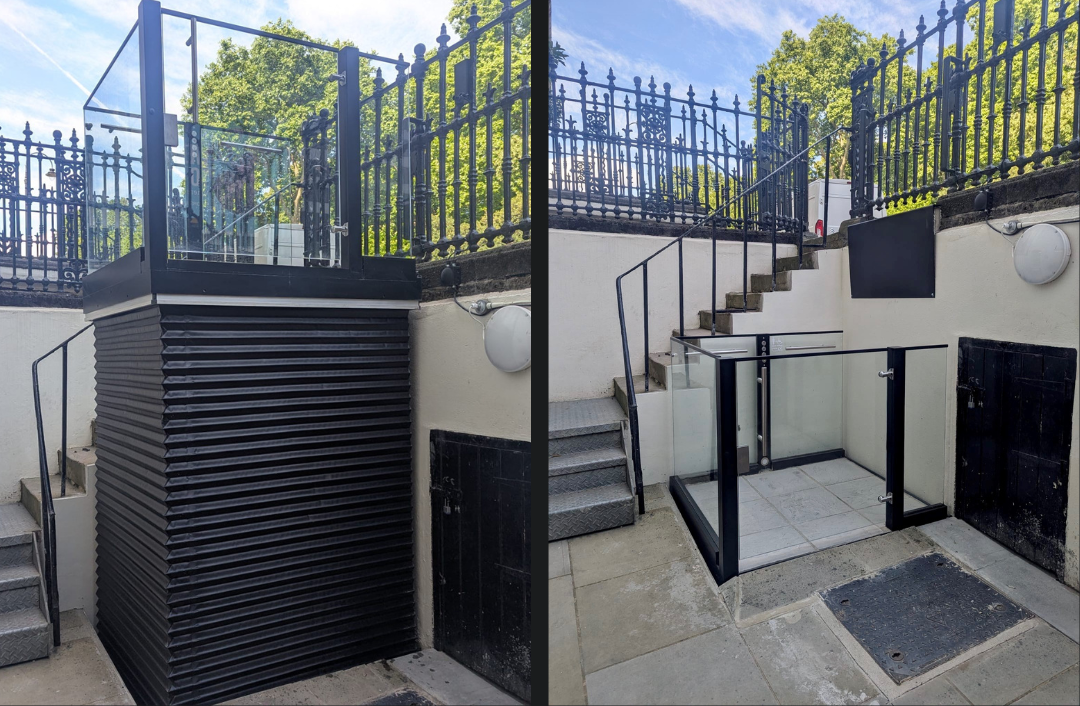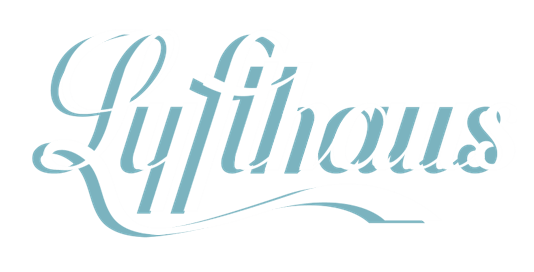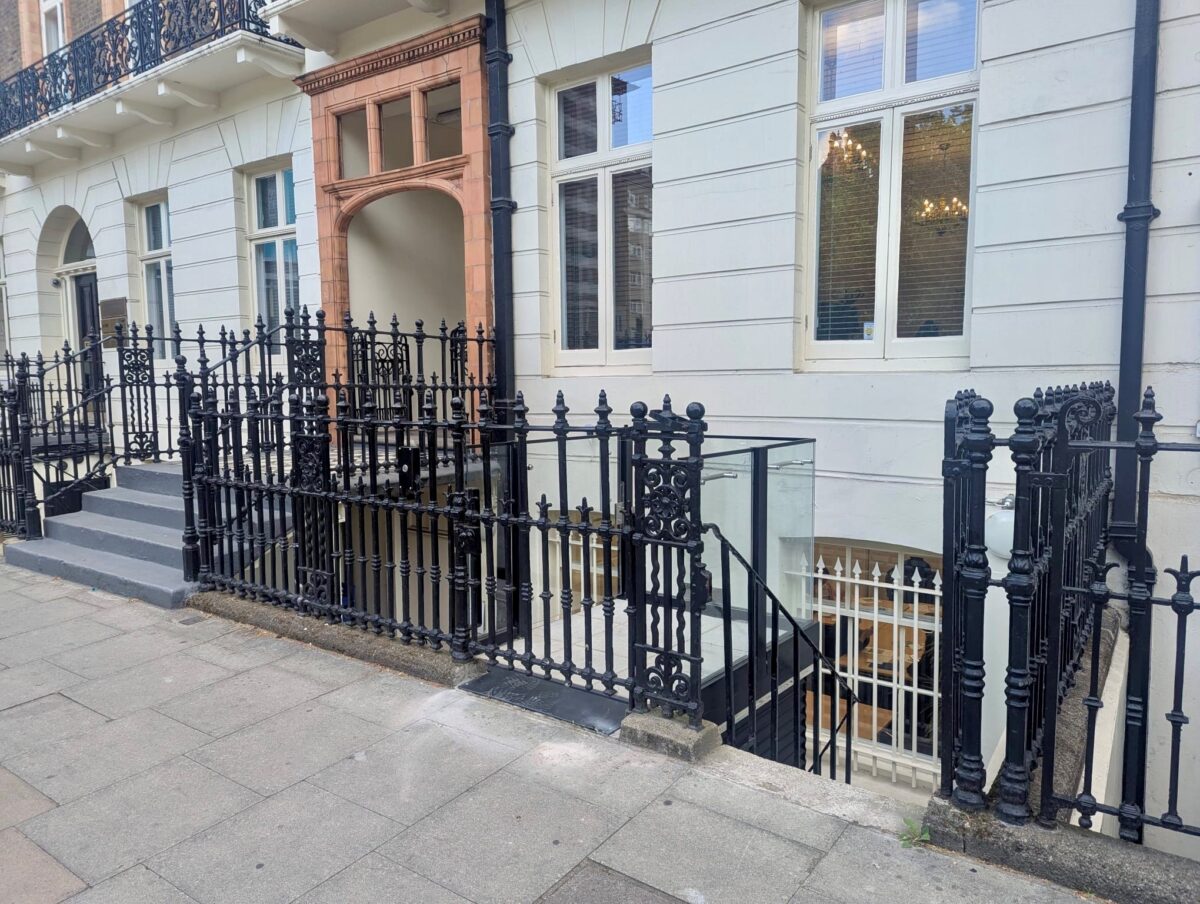Russell Square, one of London’s most iconic and historically significant green spaces, holds a rich legacy dating back to the early 19th century. Developed under the commission of the 5th Duke of Bedford, the square features surrounding neoclassical houses designed by James Burton and the magnificent gardens created by Humphry Repton. At the time of its completion, it was the largest square in London, set within the Duke’s extensive Bloomsbury landholdings.
Following a meticulous restoration in 2002, which returned the gardens to their original horseshoe-shaped layout lined with grand lime trees, Russell Square remains a vibrant public space. It boasts beautifully maintained gardens and a café and is bordered by notable institutions such as the University of London and the grand Russell Hotel.

The Challenge of Installing Platform Lifts in Heritage Sites
Preserving the historic character and architectural integrity of the square and its surrounding Grade II listed properties was the paramount concern when introducing a new platform lift. The primary challenge was not just to install an effective lift but to create a platform lift solution that was both practical and exceptionally discreet, avoiding any visual compromise to the Georgian and Victorian heritage aesthetic.
In sensitive environments like this, standard accessibility ramps or conventional elevators are often impractical or unacceptable to conservation officers. The demand is for highly specialised heritage lifts that offer full functionality while remaining virtually invisible when not in use.
Engineered Discreet Platform Lifts for Russell Square
Lyfthaus, specialists in bespoke, low-impact platform lifts, successfully rose to this unique challenge. Our approach focused on adapting the existing streetscape elements to conceal the disabled access platform lift.
The resulting solution involved:
- Balustrade Adaptation: The existing street-level balustrade (railing) was adapted and integrated into the lift mechanism. This structure now functions as a fully interlocked gate and safety barrier for the lift.
- Seamless Integration: When the platform lift is in its lowered position, the custom-finished platform surface blends perfectly with the surrounding pavement and architecture. This level of seamless integration ensures that the lift is so discreet that pedestrians barely notice it when passing by.
- Full Compliance: The design ensures full access compliance with the Equality Act 2010, providing effortless and independent access for wheelchair users and those with limited mobility.
This kind of sensitive, heritage-focused accessibility solution is a hallmark of the Lyfthaus team. We specialise in engineering unique platform lifts that resolve complex access problems in architecturally significant settings. Our work at Russell Square demonstrates that modern convenience and historical preservation can and should coexist beautifully.
The Impact of a Discreet Platform Lift
Russell Square now stands as a perfect, working example of how iconic historic public spaces can be made fully accessible without compromising their architectural integrity. By choosing a bespoke, discreet platform lift, the square ensures that:
- Public Access is Universal: Everyone, regardless of mobility, can enjoy the gardens, café, and access the surrounding institutions.
- Aesthetic Value is Protected: The platform lift does not detract from the beauty or the historical authenticity of the Grade II listed environment.
- Future-Proofing is Achieved: The solution provides long-term, reliable disabled access, securing the square’s utility for future generations.
If you are facing an accessibility challenge in a heritage, listed, or architecturally sensitive property, a custom-designed platform lift from Lyfthaus provides the ideal balance between modern necessity and historical preservation. Contact us today to find out more.

